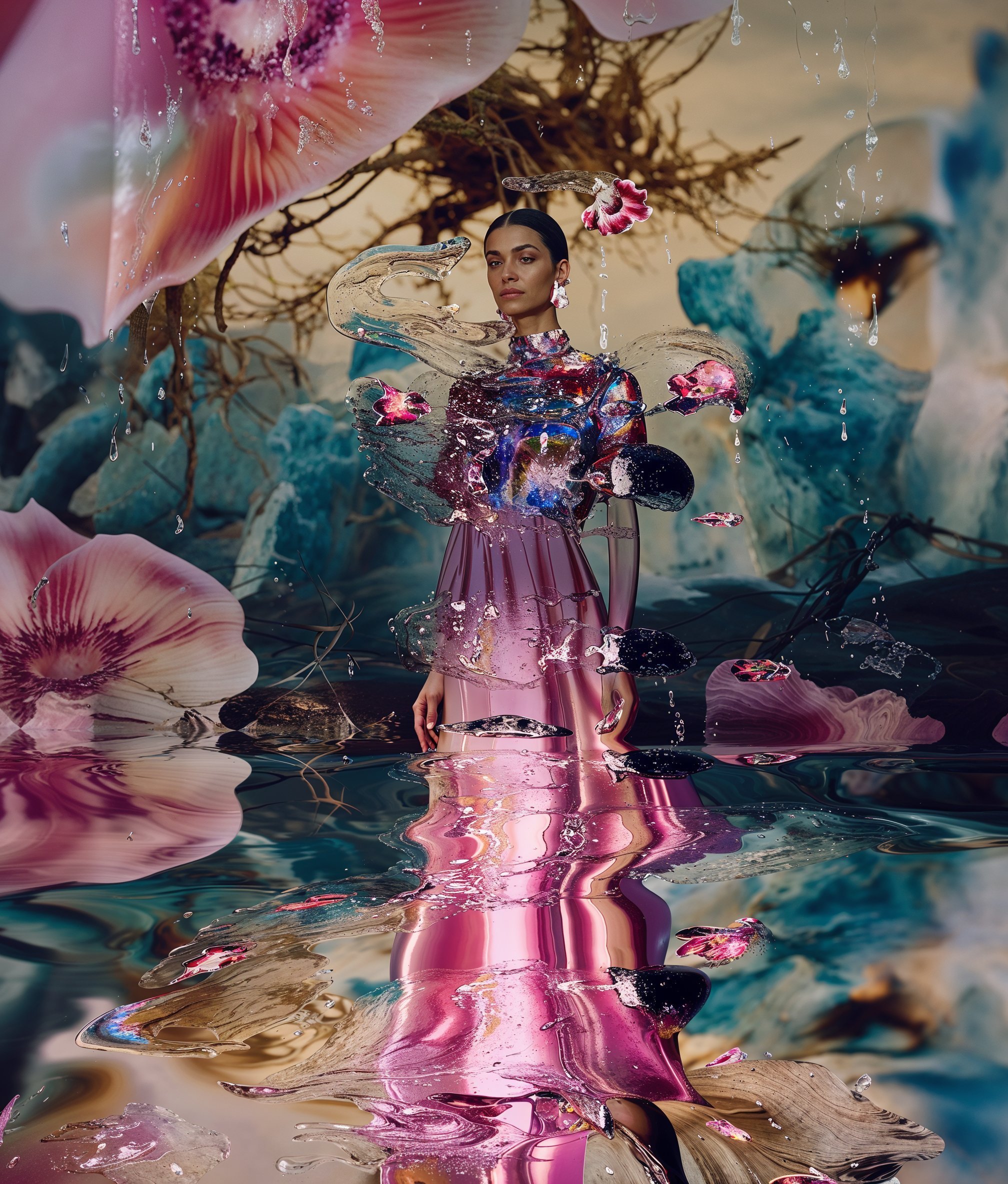Creative Technologist Irina Raicu Leads a New Genre of AI Artists
By using AI tools she’s creating unique one-of-one works that live on chain

Part of Decential Media’s celebration and recognition of Women’s History month
As technology evolves, so too will the tools a digital artist has at their disposal to create work that’s meaningful to them. When you think about it, that’s how it’s always been.
Whether it’s squashed berries on cave walls, oil on canvas, or drawing in Microsoft Word, the tools an artist uses are a product of what’s available and what feels like the best expression of what they’re trying to communicate.
For award-winning artist Irina Raicu, that tool is artificial intelligence (AI).
Growing up in Romania, Raicu would draw and create clothes for her mother’s small fashion business but opted for a career in computer science because she was good at math. While studying for her PhD in business informatics with a specialization in AI, she became familiar with AI tools and their functionality. She ultimately combined them with her creative background to become an AI artist and fashion designer.
“The first time I discovered AI techniques was during my PhD research,” Raicu said to me during a recent interview. “I discovered these techniques to create art and fashion design and eventually managed to select some specific data sets to combine with images and—using existing AI tools—create art.”
While she’s only recently begun to share that art, it’s caught the attention of several large fashion brands, winning her an AI award at the 2023 Metaverse Fashion Week for her work with Tommy Hilfiger—which were mintable jackets for digital avatars.
“I’ve waited a while to promote my artwork,” Raicu said. “My main objective was to create an artistic nature in the world of AI, and I wanted to integrate my drawings at the beginning in order to add a personal touch to the work. I’m not using one simple tool, I’m using a multitude of tools and AI models to create an artistic concept.”
Despite Raicu’s initial AI research having nothing to do with art, she began to realize how certain techniques could be used to create digital artworks. She began to mint them on-chain as unique digital one-of-one’s. For Raicu, blockchain offered more possibilities than the traditional art world.
“I find the web3 art market to be more open than the traditional art market,” Raicu said. “I believe it opens new doors for artists from multiple perspectives and is another way of connecting with people. I believe community is the most important element we have in web3 that’s missing in the physical world.”
Raicu believes the element of the web3 community where people can vote for your art or design can help manifest a greater sense of connectivity for artists with fans, collectors and other artists.
“You also develop a more personal relationship,” she said. “It opened a lot of doors for me to show my work to different conferences, Twitter spaces, and meet other artists and collectors. With web3, it’s unconditional support, and I really love the feeling.”
Raicu’s work is inspired by altruism and showing the reality of situations with topics like environmental advocacy and the need to spread climate change awareness.
“For my artistic niche, I emphasize the negative effects of climate change, and my objective is to serve as a call to action or wake-up call for communities and individuals to address the global crisis,” she said.
Raicu incorporates a lot of elements from nature into her pieces.
“I have another collection that integrates fashion elements and also discusses evolution,” she said. “We’ll see a renaissance type painting with new characters in it—like one wearing VR glasses—in order to communicate the evolution we are all facing.”
It’s an evolution poised to eventually obliterate the delineations between traditional and digital art and refer to it all as art. But Raicu believes the distinctions are helpful when comparing different pieces against each other.
“I think people are still not yet understanding the evolution,” she said. “I find it annoying comparing a painter with an AI artist because they’re different. As is photography, which has its own charm. AI art has its own niche and I believe that in the future, we’ll start to see new types of creators and AI artists with curation being the next needed skill after the prompt mastering. It will open the doors to another type of creativity.”
Raicu believes learning how to give AI prompts is a skill, and learning how to integrate an individual's creativity within the prompts of AI tools is also a skill.
“I believe great AI artists should consider elements that resonate with their character and personality and try to express them in the same way classical artists have done,” she said. “You have to consider a concept and what you want to express and then share that with your community. Share everything with your community and be transparent about the tools you are using and the way you are thinking.”
AI also allows Raicu to redefine her drawings by giving them another style—another effect—and has helped her express herself in a new and unexpected way.
“I love to create art with AI because—compared to other tools—you always have this element of surprise, something unexpected at the end,” she said. “You have to wait to see what the machine understood from your words and how it understood your customization.”
She continued, “Like a traditional artist, you have a canvas, you have to see what colors you’re using, the type of characters you want to use, the dimensions, and so on and so forth. You have to decide how abstract you want to be, how realistic you want to be, how much of your text you want to be taken into consideration for your prompt. I’m doing a lot of customization to my artwork and I believe this is the only medium for me to express my artistic vision.”


